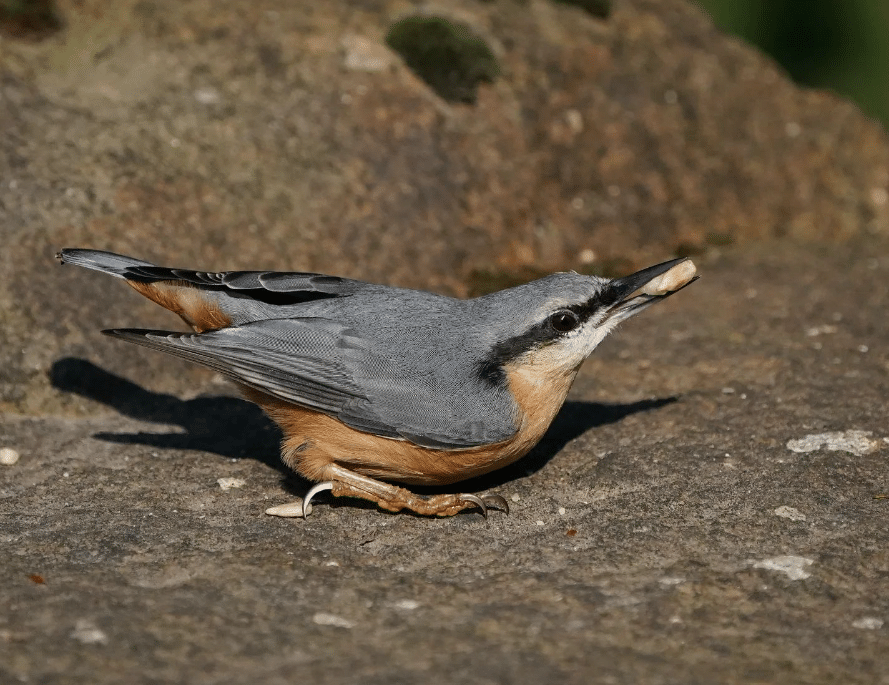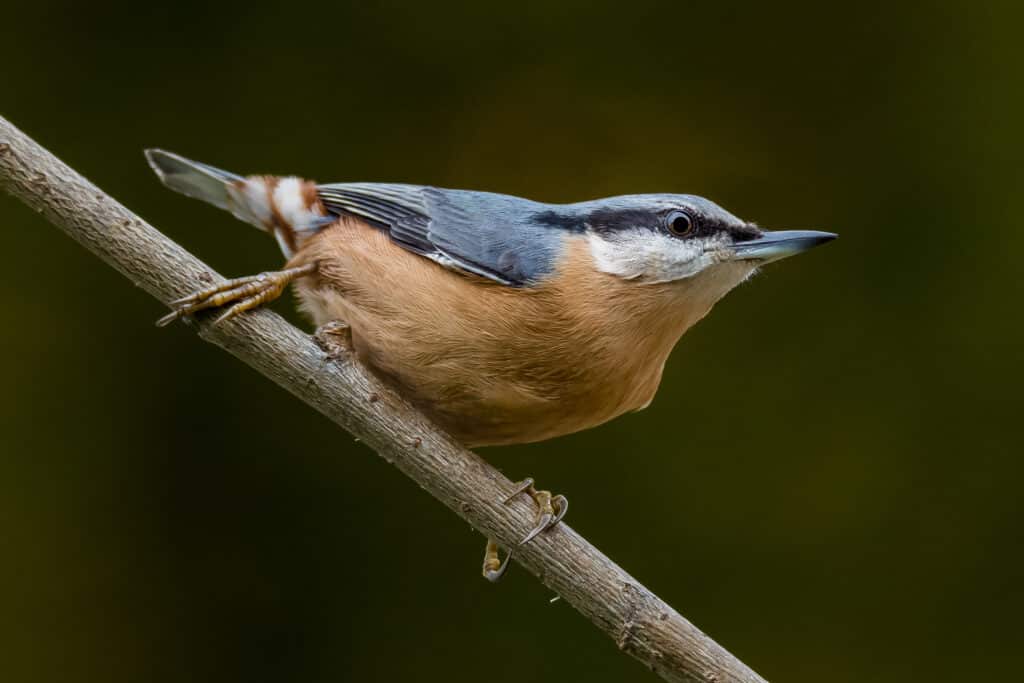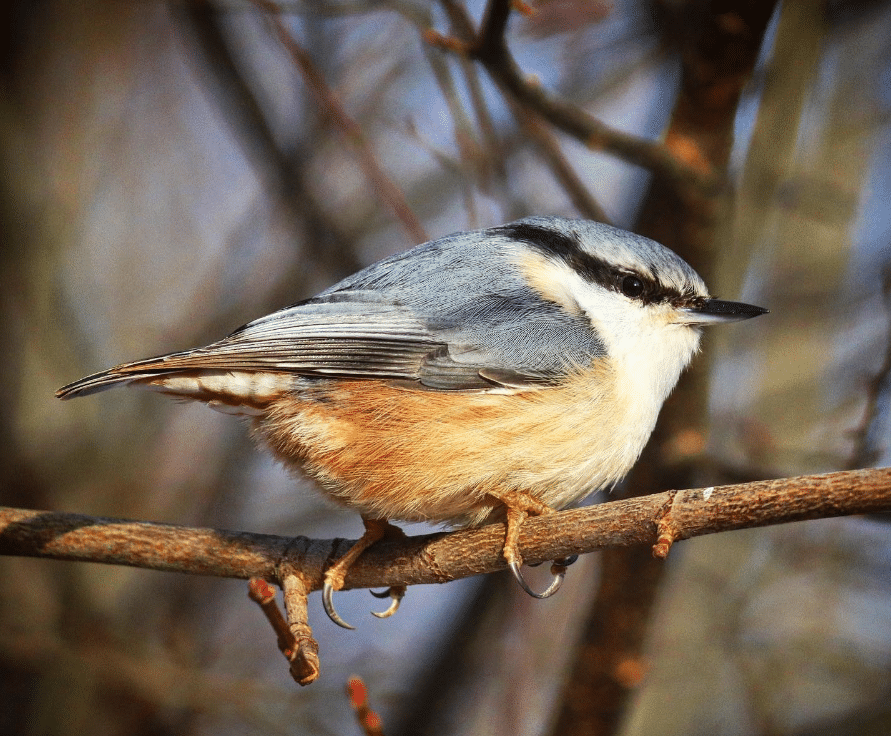Nuthatches, those charming and agile avian creatures, have long held a special place in the hearts of bird enthusiasts and nature lovers. These small wonders are not merely birds; they are dynamic, captivating, and essential elements of their ecosystems. In this comprehensive exploration, we will immerse ourselves in the world of nuthatches, uncovering the intricacies of their habitat, behaviour, diet, unique characteristics, and much more.
Introduction
Nuthatches, belonging to the Sittidae family, are an extraordinary group of birds, with over 25 species scattered across the globe. Their physical traits, such as compact bodies, sharp beaks, and powerful legs, make them instantly recognisable and endearing to birdwatchers and scientists alike.
Geographic Distribution
These avian acrobats have conquered various continents, earning their status as globally recognised bird species. From the lush forests of North America to the historic landscapes of Europe, the diverse regions of Asia, and even the hidden corners of Africa, each nuthatch species has uniquely adapted to its geographic niche.

Regional Adaptations
North America: The White-breasted Nuthatch (Sitta carolinensis)
In North America, the White-breasted Nuthatch reigns supreme. Thriving in deciduous forests and suburban neighbourhoods, these nuthatches often grace bird feeders with their presence. Their distinctive appearance, featuring a striking black cap and a snowy white chest, adds an extra layer of allure.
Eurasia: The Eurasian Nuthatch (Sitta europaea)
Across the Atlantic, the Eurasian Nuthatch holds court. Found in woodlands spanning Europe and Asia, this nuthatch boasts blue-grey plumage and a unique set of behaviours that have made it a sought-after subject for birdwatchers and ornithologists.
Physical Attributes
Nuthatches may be petite, measuring only 4-6 inches in length, but their visual impact is enormous. With shades of blue-grey plumage, prominent black eye stripes, and contrasting white chests, their physical characteristics are a testament to their evolutionary adaptation. These traits not only make them aesthetically striking but also enable them to blend seamlessly into their wooded habitats.

Habitat and Behavior
Nuthatches are woodland enthusiasts, favouring both deciduous and coniferous forests. Their adaptability, however, allows them to thrive in parks and gardens, as long as the trees offer the promise of sustenance.
Foraging Techniques
Among the most captivating aspects of nuthatches is their unique foraging behaviour. These birds are true aerial acrobats, crawling upside down on tree trunks with astonishing dexterity. Their strong legs and sharp claws become their tools for uncovering insects and seeds hidden beneath the bark. This distinctive feeding style sets them apart from the vast majority of bird species and showcases their evolutionary ingenuity.
Vocalisations and Communication
Nuthatches are renowned for their frequent vocalisations, which punctuate the tranquillity of woodland habitats. The “yank-yank” call is an unmistakable hallmark of their presence. However, their vocal repertoire extends beyond this signature call, serving multiple purposes, including territorial assertion and courtship rituals.
Diet and Feeding Habits
Nuthatches are opportunistic feeders, adapting their diet based on the availability of food resources.
Versatile Diet
Their dietary flexibility allows them to partake in a diverse menu. During warmer months, nuthatches primarily focus on insects, emerging as valuable allies in pest control. As temperatures drop and seasons shift, they transition to a diet more reliant on seeds and nuts, showcasing their adaptability.
Bark Foraging Expertise
Nuthatches’ expertise in extracting insects and insect eggs from tree bark is awe-inspiring. Their specialised bills possess the finesse required to pry open minuscule crevices, unveiling hidden prey. This behaviour is not only fascinating but also ecologically critical for maintaining the delicate balance of their respective ecosystems.
Unique Characteristics
Nuthatch Drumming
One of the most mesmerising behaviours exhibited by nuthatches is drumming. They create rhythmic tapping sounds on resonant surfaces, which can serve as a form of communication, territory marking, or even a means of attracting a mate. This behaviour adds an extra layer of complexity and intrigue to their already charming persona.
Courtship Rituals
During the breeding season, nuthatches engage in intricate courtship rituals. These displays of affection often involve the exchange of food items, cementing pair bonds crucial for successful reproduction. The choreography of courtship serves as a testament to the complexity of their social and reproductive behaviours.

Conservation Status
Nuthatches are fortunate in that they are not currently considered threatened or endangered species. Their adaptability to various habitats, stable populations, and continued presence across their geographic ranges are promising indicators for their continued survival. However, vigilance in conserving their habitats remains essential to ensuring their long-term well-being.
Interactions with Humans
Nuthatches have a profound impact on the lives of many birdwatchers, nature enthusiasts, and researchers.
Birdwatching Appeal
Their active and entertaining demeanour makes them a favourite subject for birdwatchers. Enthusiasts frequently set up specialised feeders to entice nuthatches, providing unparalleled opportunities for observation and photography. These charismatic avian acrobats captivate all who bear witness to their antics.
Ecological Impact
From an ecological standpoint, nuthatches are unsung heroes, actively contributing to the well-being of their ecosystems. By regulating insect populations, especially during the nesting season when they consume significant quantities of insects to nourish their young, they play an integral role in the intricate web of life that sustains their habitats.
Conclusion
In summary, nuthatches are remarkable birds that bring life and vitality to the woodlands they inhabit. Their unique behaviours, striking appearances, and important ecological roles make them a subject of fascination and admiration for bird enthusiasts, researchers, and anyone who appreciates the wonders of the natural world. As we delve deeper into the intricacies of these charming avian acrobats, we gain a greater appreciation for the rich tapestry of avian life that surrounds us, reminding us of the importance of preserving their habitats for generations to come.
Sam loves to learn about animals and their habitats. He has been a nature lover from a very young age, and has been writing papers and articles about wildlife for as long as he can remember.
